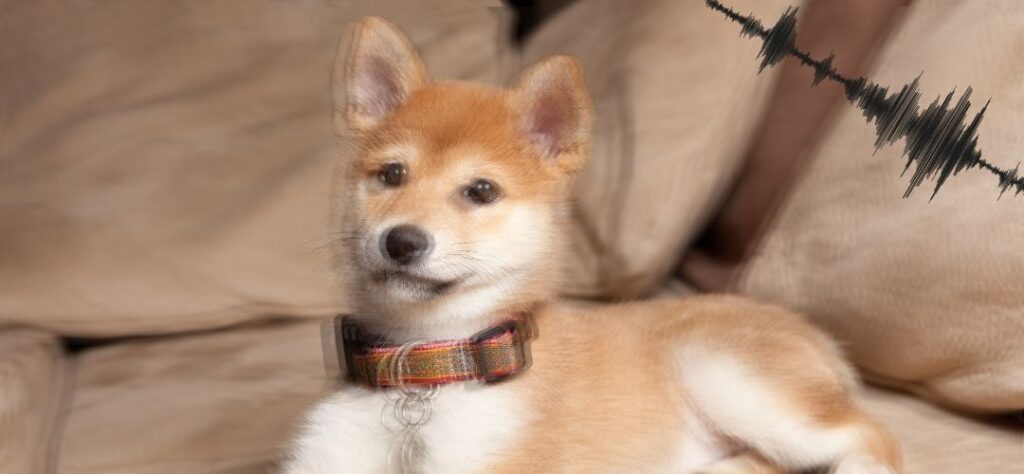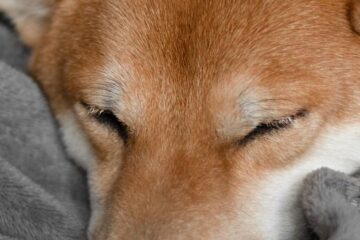It’s a question that has plagued pet owners for centuries. After all, why do these small, fluffy Japanese dogs have such an affinity for shaking?
The answer may surprise you– it turns out that there are actually quite a few reasons why Shibas shake! In this article, we’ll explore some of the common causes and possible solutions to this issue. Read on to learn more about why your Shiba might be shaking and what you can do to help.
The most common cause of Shiba shaking is usually related to fear or anxiety. Much like humans, Shibas are capable of feeling fear and will shake when faced with situations that induce stress. This could include loud noises, unfamiliar people or animals, or even being in a new environment. If your Shiba is shaking, it’s important to keep them as calm and relaxed as possible.
Shibas may also shake due to excitement or happiness. Much like us humans, Shibas can get carried away and their natural response is often to express their joy through shaking! If this happens, try not to worry too much– simply allow your Shiba to express themselves and enjoy the moment.
Finally, it’s important to remember that Shibas are prone to cold temperatures and can often shake when they become too cold. If you notice your Shiba shaking, check their temperature and make sure they’re not getting too chilly. This is especially true if you live in an area with colder climates.
So, why do Shibas shake? As it turns out, the answer is multi-faceted and can range from fear or anxiety to simply expressing their joy! In any case, if your Shiba is shaking for longer than a few minutes or appears distressed, you may want to consult a veterinarian to ensure everything is okay.

Why do dogs fake shiver?
Did you ever notice your pup shaking their body as if they were trying to shake off water, even though they haven’t been anywhere near a pond? Or have you noticed them shivering while sitting on the couch next to you? If so, then your pup might be engaging in canine behavior known as “fake shivering”.
So why do dogs fake shiver? The answer is that many dogs use fake shivering to communicate with their owners or other people and pets in the environment. For instance, your pup might fake shiver when they are asking you for attention or a treat. They could also be trying to convey a sense of excitement or anticipation, such as when they know it’s time for a walk.
Fake shivering can also be used as an appeasement behavior. If your pup is feeling anxious or overwhelmed, fake shivering might be their way of trying to defuse a tense situation and make sure everyone stays calm. It could also be sn effort to show submission and indicate that they don’t want to cause any trouble.
Unfortunately, it’s difficult to know for sure why your pup is fake shivering. The best way to determine this is by observing their body language and other behaviors they are displaying in combination with the shiver. If you notice signs of distress or anxiety, such as pacing, panting, or trembling, it may be time to consult a veterinarian or dog behaviorist for help managing your pup’s emotions.
If your pup is simply fake shivering to get your attention, make sure you provide them with plenty of love and positive reinforcement. When it comes to negative behaviors like nipping or barking, try redirecting their energy into an appropriate activity such as playing fetch or going for a walk.
Should I be worried if my dog is shaking?
When it comes to canine behavior, shaking can be a normal and healthy form of communication or an indication that your pup is feeling nervous or stressed. If you notice that your pup is exhibiting any other signs of distress in combination with the shaking, such as panting, pacing, trembling, or hiding away from people and pets in the environment, then it’s time to take a closer look at what might be causing your pup to feel anxious or overwhelmed.
In some cases, shaking may be caused by an underlying medical condition such as pain, fear, anxiety, or even a seizure disorder. If you suspect that the shaking is due to a medical issue, it’s important to consult with your veterinarian for an accurate diagnosis and treatment plan.
It’s also important to note that some breeds, such as Shibas and Chihuahuas, are predisposed to shivering due to their smaller size. In these cases, the shaking may just be your pup’s way of regulating their body temperature. While this type of shaking can be normal for smaller breeds, it’s still important to monitor your pup closely to make sure that they’re not showing any other signs of distress.
If the shaking seems to be connected to an emotional response, such as fear or anxiety, it’s important to look for ways to reduce your pup’s stress levels. Try providing a comfortable environment with plenty of access to water and toys, teaching basic obedience commands like sit, stay, and down, getting your pet used to regular grooming routines, and bringing them on plenty of fun walks and outings.
How can I stop my dog from shaking?
If your pup’s shaking is due to an underlying medical condition, it’s important to consult with your veterinarian for a diagnosis and treatment plan. If the shaking is associated with fear or anxiety, there are several steps you can take to help ease your pup’s distress.
Providing plenty of physical activity will ensure that your pup is getting out their extra energy and burning off any excess stress. Regular exercise can be anything from going for a quick walk to playing fetch or tug-of-war in the park.
Training sessions are also a great way to help build confidence and reduce fear in dogs, as it provides consistency and offers them an opportunity to learn what you expect from them. Start off with basic obedience commands like sit, stay, and down, then move on to more advanced behaviors such as leave it or heel.
Creating a safe space for your pup can also help keep their anxiety levels low. Make sure all of their needs are met before leaving the house including full access to food, water, and toys. Consider using a calming spray or diffuser with lavender essential oil in their space to help them relax.
Finally, make sure your pup is getting enough quality sleep. A tired pup is more likely to be anxious and prone to shaking, so ensuring that your pet gets at least eight hours of restful sleep each night will go a long way in helping them stay calm.
Shiba shaking can be concerning, but with the right training and management, it is possible to reduce your pup’s fear and anxiety levels. Consulting with your veterinarian regarding any underlying medical concerns and providing plenty of physical activity, training sessions, a safe space, and quality sleep will go a long way in calming your pup down and helping them stay still.
Why does my dog shake after I pet him?
It can be a bit disconcerting to pet your pup only to have them shake after you’ve finished. But don’t worry, this shaking is usually nothing to be alarmed about. In fact, it may actually mean that your pup enjoys the physical attention they are receiving from you!
Shaking in dogs is a form of self-soothing behavior. Dogs naturally want to show their appreciation when they are being petted and will often do this by shaking or trembling. Shaking is also a reflexive response that results from stimulation on the skin’s muscles. This can cause them to shake even if they weren’t enjoying it initially, but would explain why some dogs respond so positively to petting.
It’s important to remember that different dogs have different personal preferences when it comes to petting, and they may shake even if they don’t like the way you are touching them. If your pup seems uncomfortable, pay attention to their body language and try to adjust how you’re petting them accordingly.
Do dogs shiver when sad?
Shivering and shaking can be signs of both happiness and sadness in dogs. While a relaxed pup may shiver or shake out of pleasure or excitement, a scared or anxious pup may shake due to fear or distress. This type of trembling usually happens when a dog is exposed to something that frightens them, such as loud noises, sudden movements, or unfamiliar people.
If your pup is shaking and doesn’t seem to be exhibiting any other signs of fear or distress, then it’s likely that your pet is just excited or happy. If, however, you notice any additional signs of anxiety such as panting, hiding behavior, wide eyes, or avoiding contact with you, it may indicate that they are feeling scared or sad.
Conclusion | Why do Shibas shake?
Shaking is a natural behavior in dogs, and can be an expression of happiness, pleasure, self-soothing, or even fear. The type of shaking your pup does will depend on the context and how they are feeling at that particular moment. If you think your pup may be scared or anxious, pay attention to their body language so you can adjust how you’re petting them accordingly. With some love and patience, you can help your pup to learn that shaking doesn’t always have to be a sign of distress.


